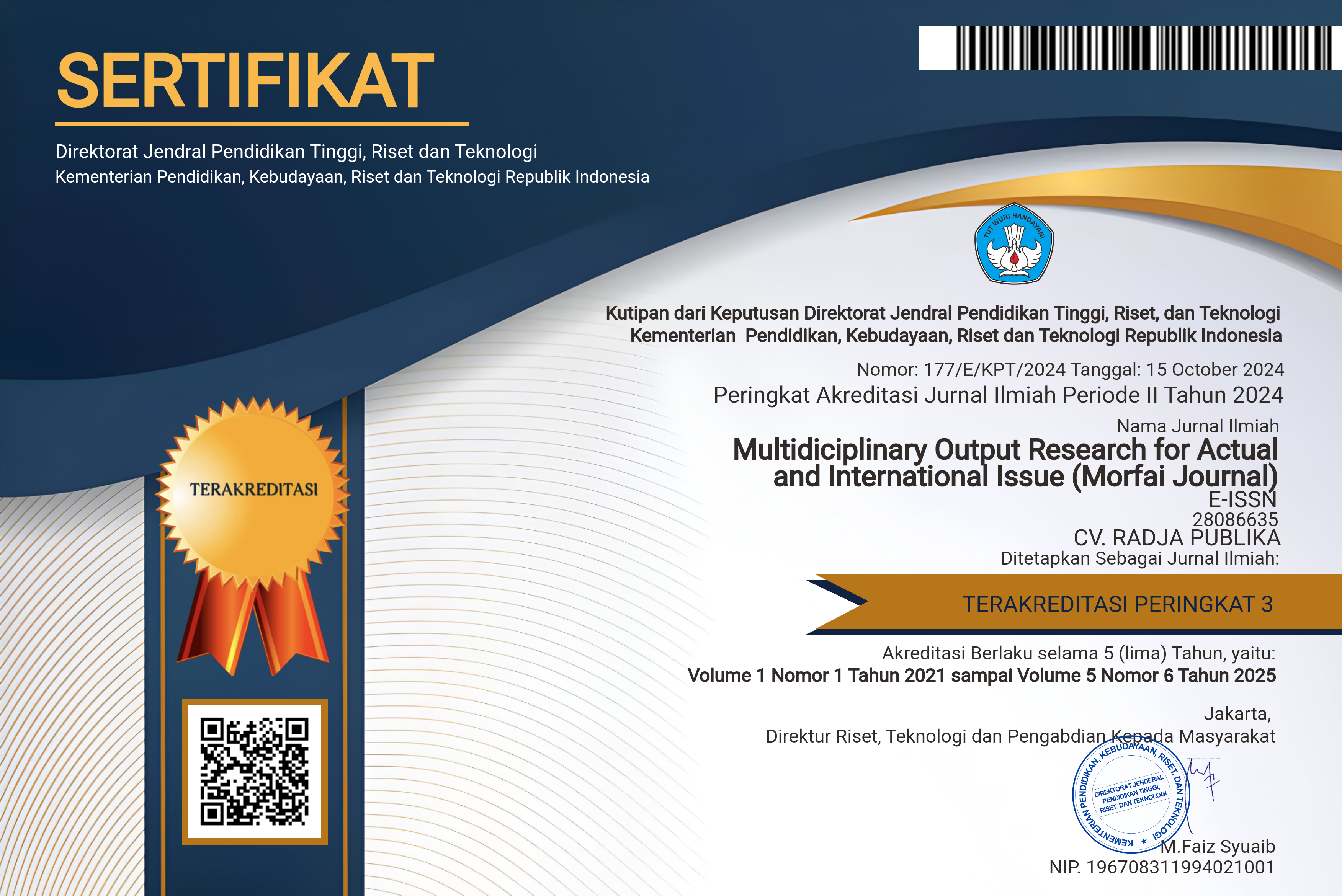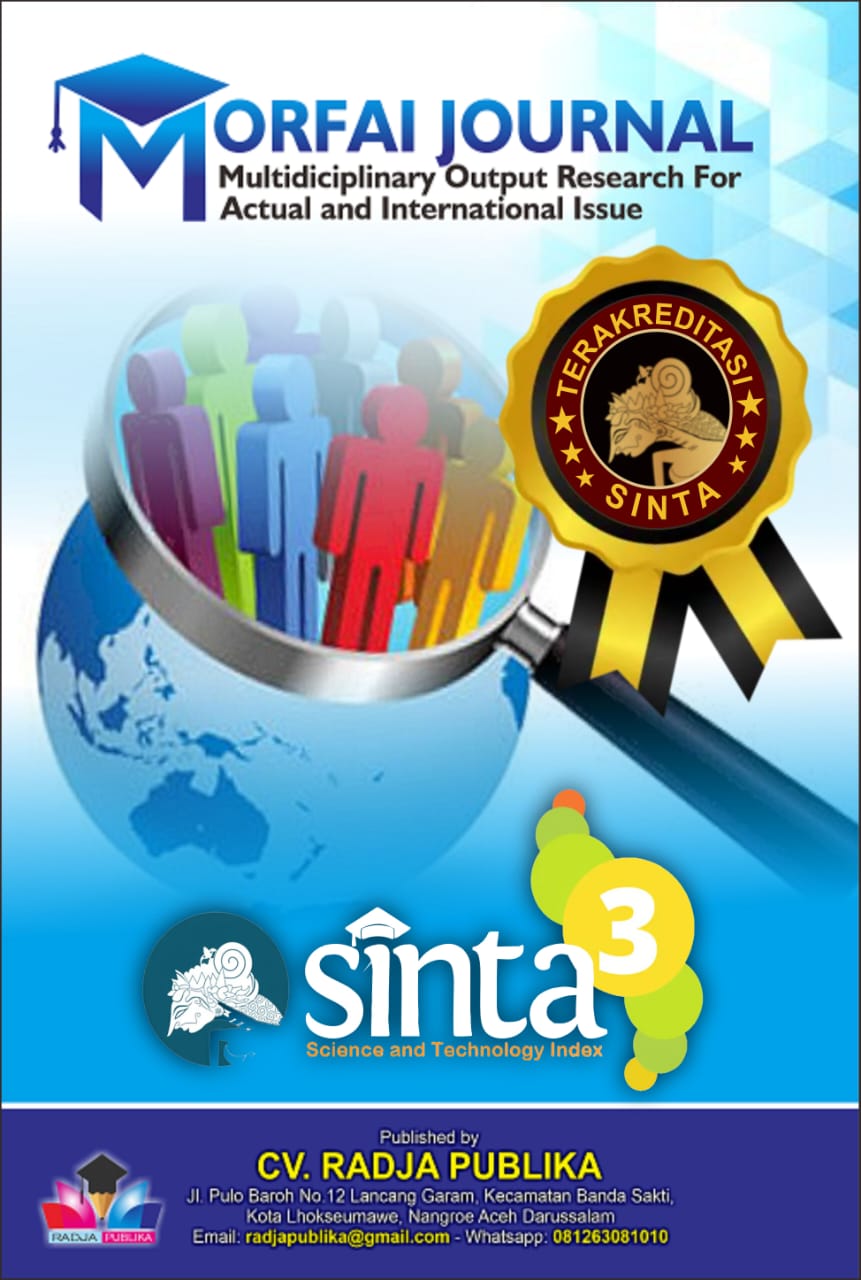DECLINE TREND IN NUMERACY ACHIEVEMENT OF JUNIOR HIGH SCHOOL STUDENTS IN CENTRAL PAPUA: ANALYSIS OF EDUCATION REPORT CARD 2024–2025
Main Article Content
Ebit Rusali
This research examines the declining trend in numeracy achievement among junior high school students in Central Papua based on the 2024-2025 Education Report. As the youngest province with challenging geographical characteristics, Central Papua faces complex problems in equitable quality education. The research aims to analyze the declining trend in numeracy achievement, identify determinant factors, and formulate contextual policy recommendations. Using a quantitative descriptive approach, this study analyzes secondary data from the Ministry of Education and Culture's Education Report using temporal comparative analysis, spatial gap analysis, correlational analysis, and factor analysis techniques. Results show a significant decrease in numeracy achievement from 48.54% (2024) to 45.96% (2025), contrary to the increasing national trend (57.42% to 59.75%). Five determinant factors include: lack of contextual teaching materials, low pedagogical literacy among teachers, limited supporting infrastructure, students' negative perceptions of mathematics, and low literacy skills as barriers to understanding numeracy problems. In conclusion, the declining trend in numeracy achievement in Central Papua requires holistic interventions including the development of teaching materials based on local wisdom, strengthening teacher capacity, improving supporting infrastructure, and an ecological approach involving various stakeholders to optimize the quality of numeracy education.
Alik, H. R. (2024). Analisis Rendanya Pendidikan di Pelosok Papua Intan Jaya. 8, 12520–12529.
Aziz, S. Al, & Septriyanti, Y. (2023). Korelasi antara Literasi Bahasa Indonesia dan Literasi Numerasi Matematika Siswa dalam Menyelesaikan Soal Matematika. 3(1), 14–24.
Creswell, J. W., & Poth, C. N. (2022). Qualitative Inquiry & Research Design. SAGE Publications Inc.
Filimdity, C. (2021). DEVELOPMENT OF PAPUA LOCAL WISDOM BASED MATHEMATICS MODULE TO PENDAHULUAN Model pembelajaran yang Matematika merupakan mata pelajaran ujian nasional . Hasil kelulusan peserta didik bukan dilihat berdasarkan nilai hasil kelulusan peserta didik di tentukan. 9(3), 165–172.
Grover, R. (2018). education policy analysis archives Digital Divide : A Critical Context for Digitally Based. 1–24.
Herzer, D. (2022). The impact of domestic and foreign R&D on TFP in developing countries. World Development, 151, 105754. https://doi.org/https://doi.org/10.1016/j.worlddev.2021.105754
Indahri, Y., Mendikbud, K., & Men-, T. (2021). Asesmen Nasional sebagai Pilihan Evaluasi Sistem Pendidikan Nasional National Assessment as a Choice of Evaluation to National Education System Pendahuluan. 12(2), 195–215. https://doi.org/10.46807/aspirasi.v12i2.2364
Junaedi, Y., & Yulianto, D. (2024). Analisis Kemampuan Numerasi Siswa SMP dalam Menyelesaikan Soal AKM Program Kampus Mengajar Angkatan 6. 602–610.
Naja, F. Y. (2022). PEMBELAJARAN KONTEKSTUAL BERBASIS ETNOMATEMATIKA DALAM MENINGKATKAN HASIL BELAJAR SISWA DITINJAU DARI. 5(1), 38–45.
Nisa, N. S., & Samputra, P. L. (2020). Analisis Ketimpangan Pendidikan Di Provinsi Papua Barat. Jurnal Perspektif Ekonomi Darussalam, 6(2), 115–135. https://doi.org/10.24815/jped.v6i2.16388
Rohmah, J. (2025). Peran Pembangunan Ekonomi dalam Membentuk Sumber Daya Manusia yang Unggul di Indonesia. 2(3), 70–87.
Song, S., Li, T., Quintero, M., & Wang, Z. (2023). The Link Between Math Anxiety and Math Achievement : The Role of Afterschool Learning.
Utami, R. T., Desstya, A., & Prayitno, H. J. (2024). Pendekatan Teaching At The Right Level dalam Membangun Budaya Literasi di Sekolah Dasar. 13(4), 5217–5232.
Wahyuningsih, H. W. & B. Y. (2024). Identifikasi Faktor Penyebab Rendahnya Kemampuan Numerasi Siswa (Studi Kasus Pada Siswa Kelas Iv Sdn 8 Cakranegara). 2(3), 410–420.









